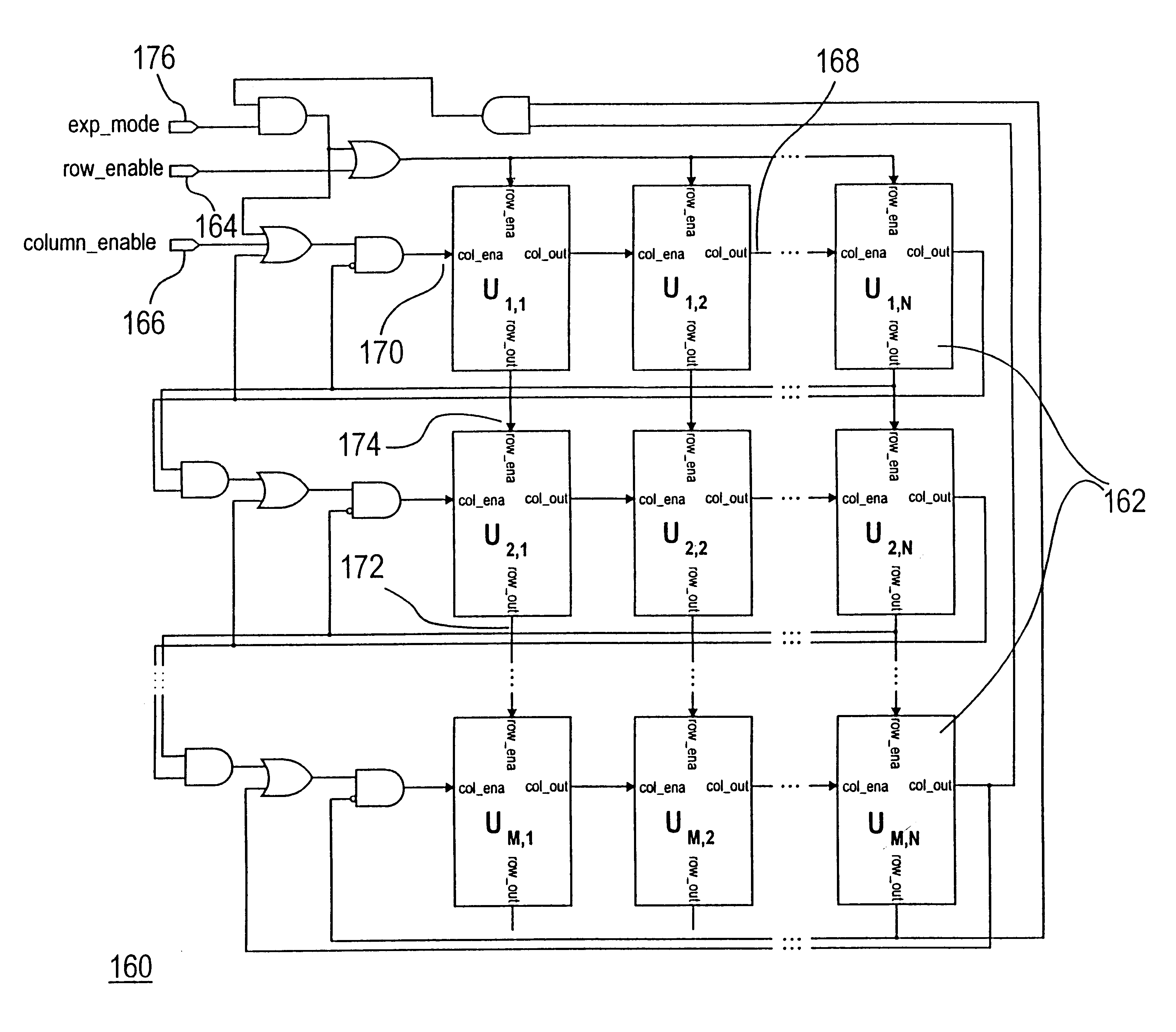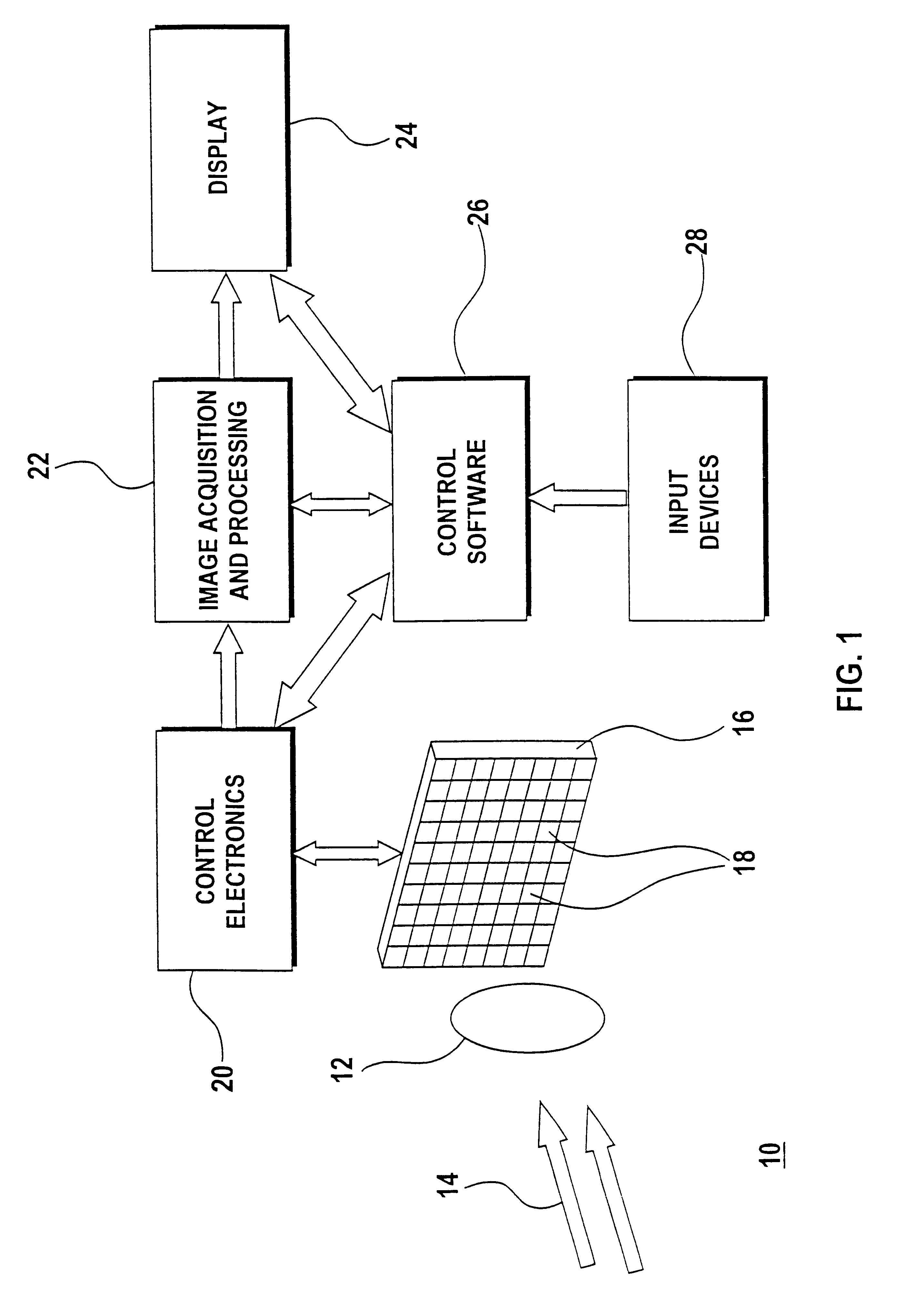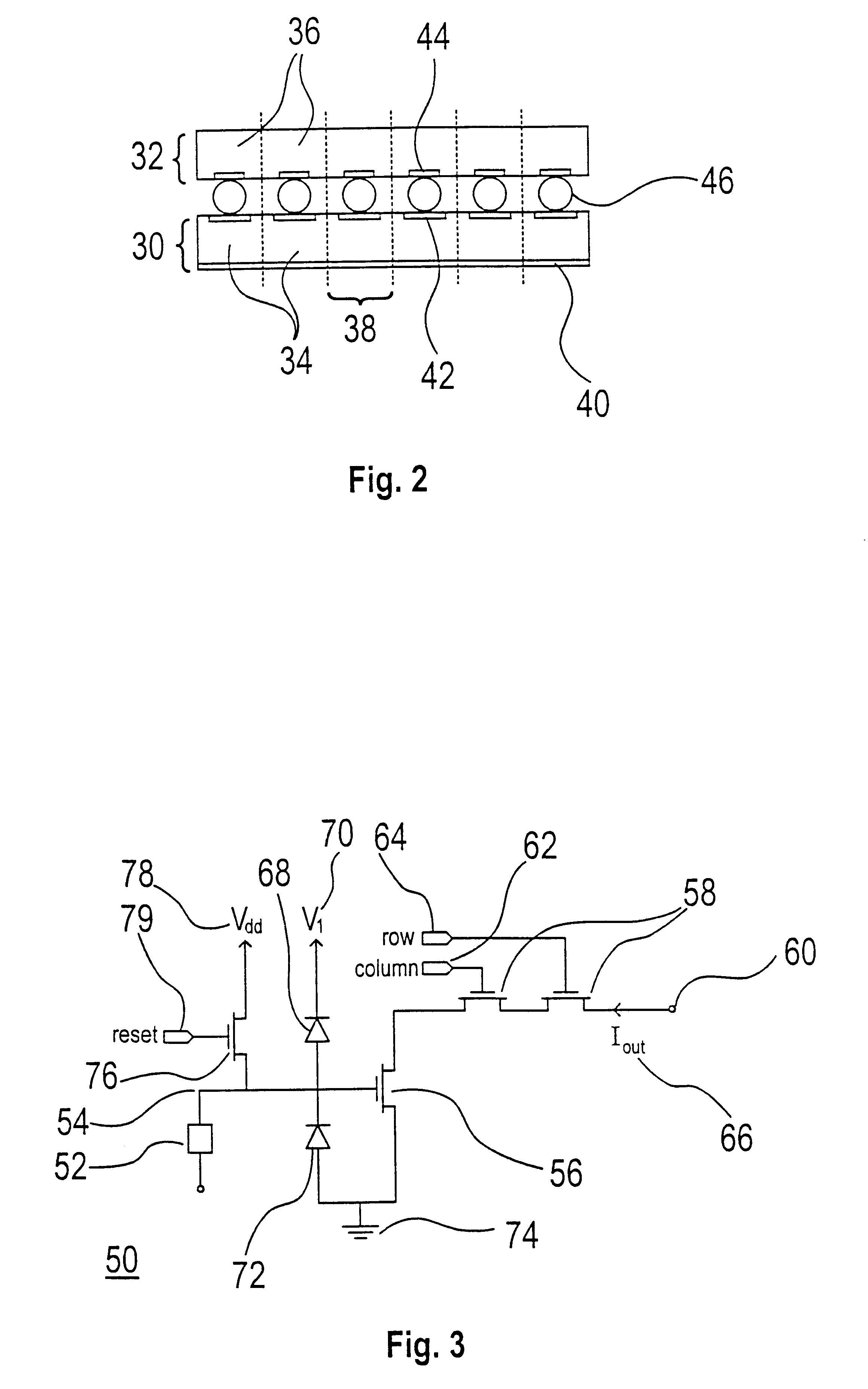Device for imaging radiation
a radiation imaging and semiconductor technology, applied in the field of semiconductor imaging devices for radiation imaging, can solve the problems of unreasonable requirements for readout electronics for handling data streams, high frame rate, and data bandwidth for live images, and achieve the effect of reducing data bandwidth and low resolution
- Summary
- Abstract
- Description
- Claims
- Application Information
AI Technical Summary
Benefits of technology
Problems solved by technology
Method used
Image
Examples
Embodiment Construction
Exemplary embodiments are described by way of example only with reference to the accompanying drawings.
FIG. 1 shows an example of an imaging system for radiation imaging including an imaging device according to the invention. The imaging device is intended for imaging of high-energy radiation, for example X-ray radiation. However, the invention is not limited to imaging of high-energy X-ray radiation, but can be applied to detection of any type of radiation, for example a-ray, b-ray, g-ray, infra red or optical radiation, subject to choice of appropriate semiconductor substrate for the detector.
The imaging system 10 in FIG. 1 provides imaging of an object 12 subject to radiation 14. The object may, for example, be part of a human body in case of medical imaging or any other object, in case of non-destructive testing.
The imaging device 16 in FIG. 1 can consist of one or two semiconductor substrates. In case of one substrate, each cell 18 in the substrate comprises of a pixel detector...
PUM
 Login to View More
Login to View More Abstract
Description
Claims
Application Information
 Login to View More
Login to View More - R&D
- Intellectual Property
- Life Sciences
- Materials
- Tech Scout
- Unparalleled Data Quality
- Higher Quality Content
- 60% Fewer Hallucinations
Browse by: Latest US Patents, China's latest patents, Technical Efficacy Thesaurus, Application Domain, Technology Topic, Popular Technical Reports.
© 2025 PatSnap. All rights reserved.Legal|Privacy policy|Modern Slavery Act Transparency Statement|Sitemap|About US| Contact US: help@patsnap.com



